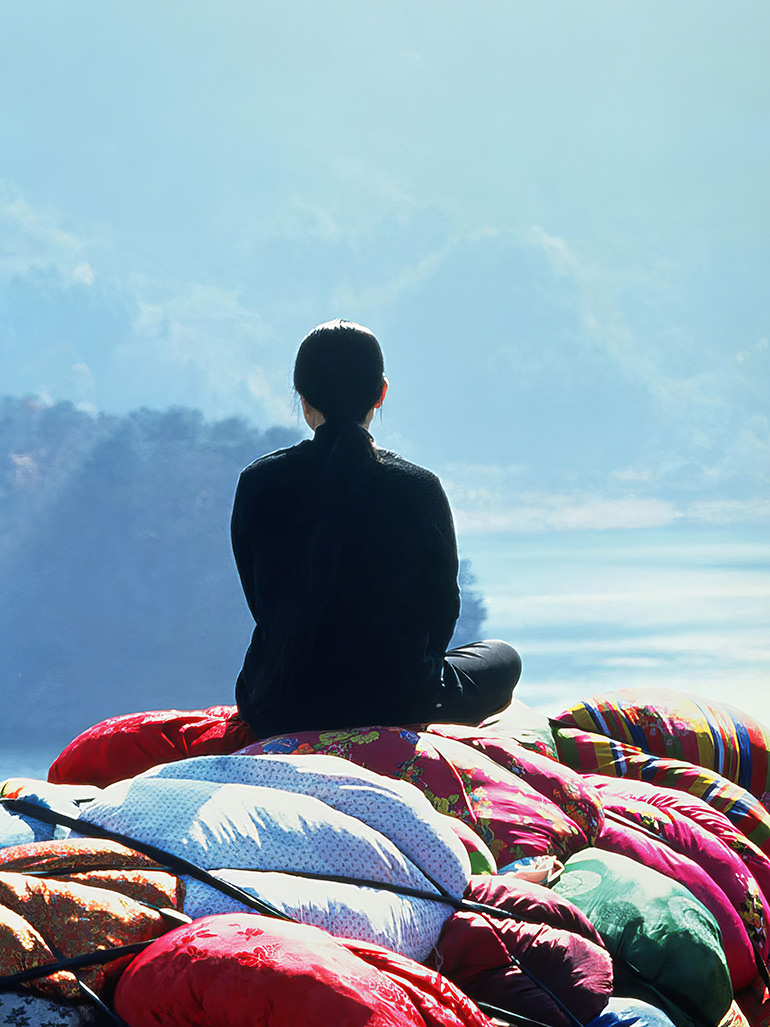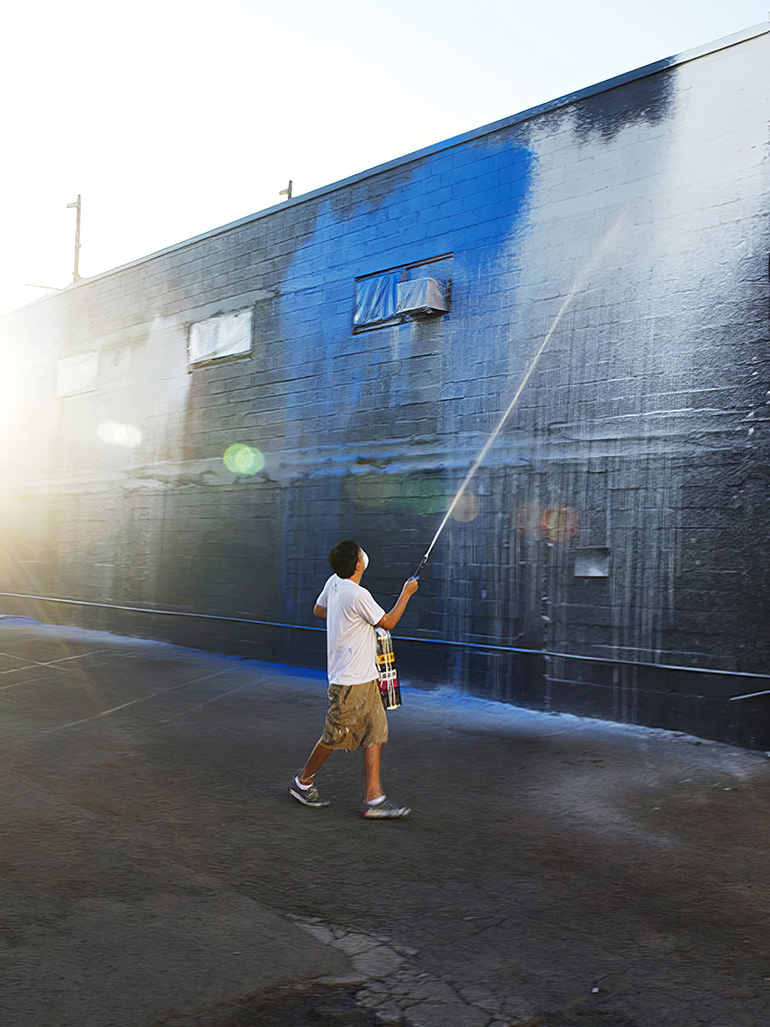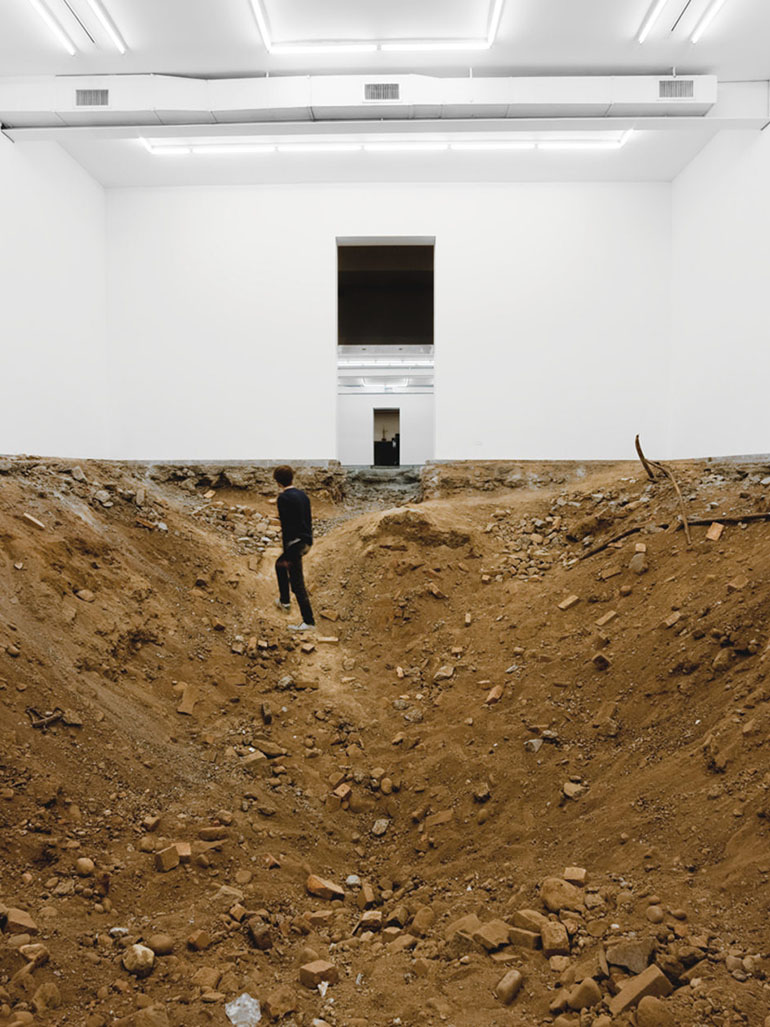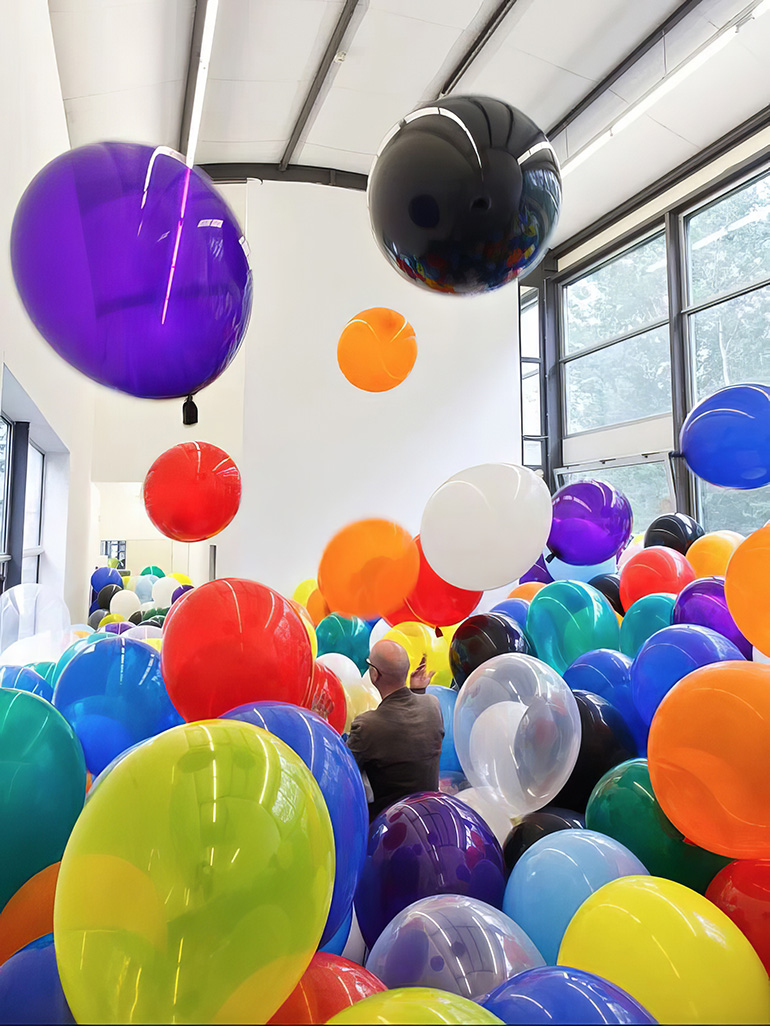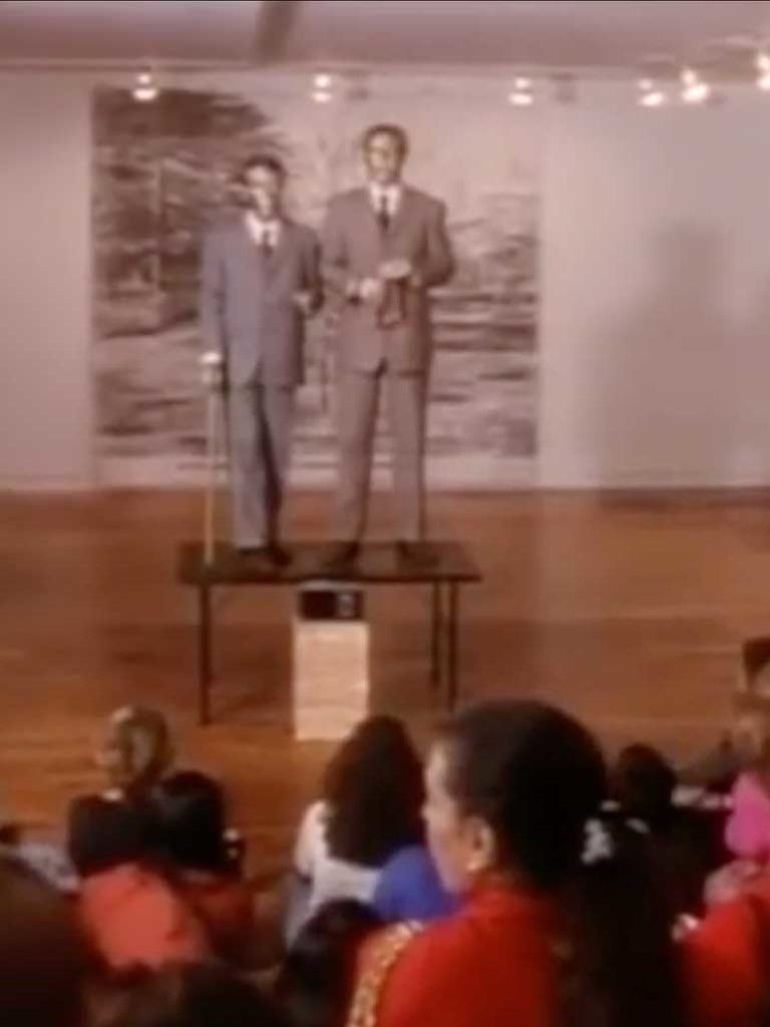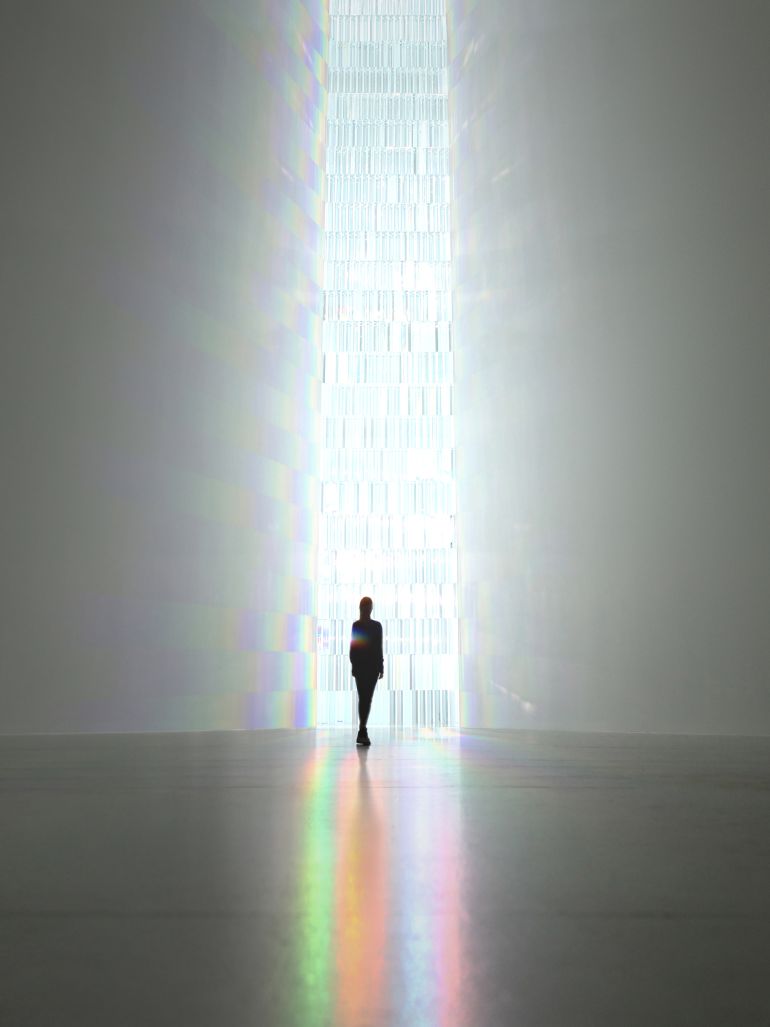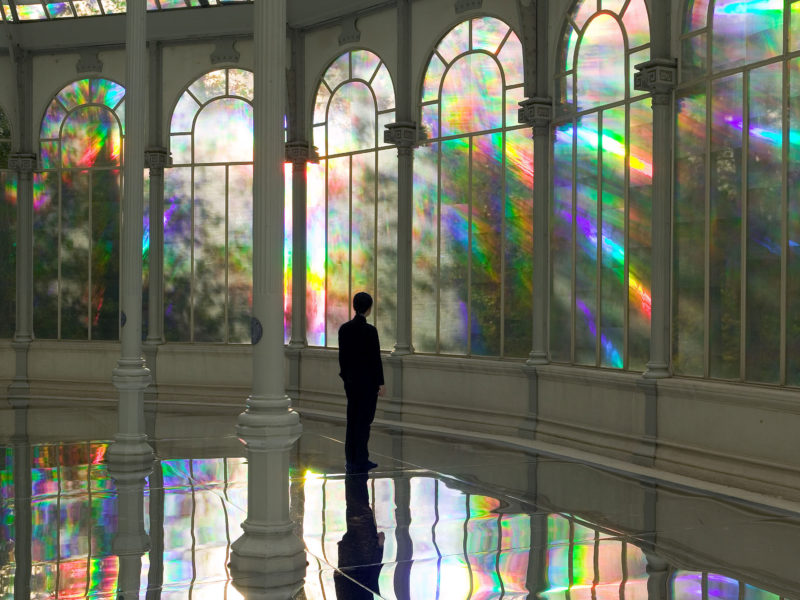
About Kimsooja
Kimsooja is a Korean-born artist that has won recognition around the world. Despite living in New York, her work is exhibited across Europe, Asia and America. Her work includes performances, photographs, installations and videos.
Kimsooja’s work involves several subjects like relationships with others, nomadism and the role of women in dealing with challenges that we meet every day.
In an interview with curator Francesca Pasini1, she said:
For me, making space means creating a different space, rather than “making” a new one. The space is always there in a certain form and fluidity, which can be transformed into a completely different substance (…) My interest in “void” is as a negative space in relationship to “Yin” and “Yang,” as a way of inhaling and exhaling, which is the natural process of “breathing” as a rule of living. This idea of duality can be found in all of my working methods from the beginning of my practice.
Kimsooja’s rainbow installations
Kimsooja has created several versions of her well-known rainbow installations, relying on light and mirrors, and shown them in Bruxelles, Metz, and Yorkshire, among other places. Typically, a special film, covered in numerous, virtually invisible scratches, was placed over all the windows. When the light strikes it, the film splits the light into the seven colors of the spectrum, filling the space with rainbows.
In at least one instance, Kimsooja has placed a mirrored surface on the floor that reflects the rainbows and helps add to the overall effect. As the installations heavily rely on daylight, with its rhythm altering throughout the day, every viewing is unique. This series explores the meditative qualities of space and is often presented in conjunction with the sound of the artist’s breathing.
Speaking about her rainbow installations, Kimsooja said2:
I don’t have control of it, and that ephemerality is the beauty of the piece, because it just comes and goes with the sunlight of the day—as in our lives, as in our destinies, as the way nature is. Nothing can be forced or made or fully controlled. I feel that goes parallel to the nature of my practice, and maybe more so now than before, and as well in the future.
Rainbow room at Palacio de Cristal, Madrid, Spain, 2006
In 2006, Kimsooja composed To Breathe – A Mirror Woman for the Palacio de Cristal in Madrid, Spain. She incorporated the building’s architectural structure into the mirrors on the floor to unite and expand space.
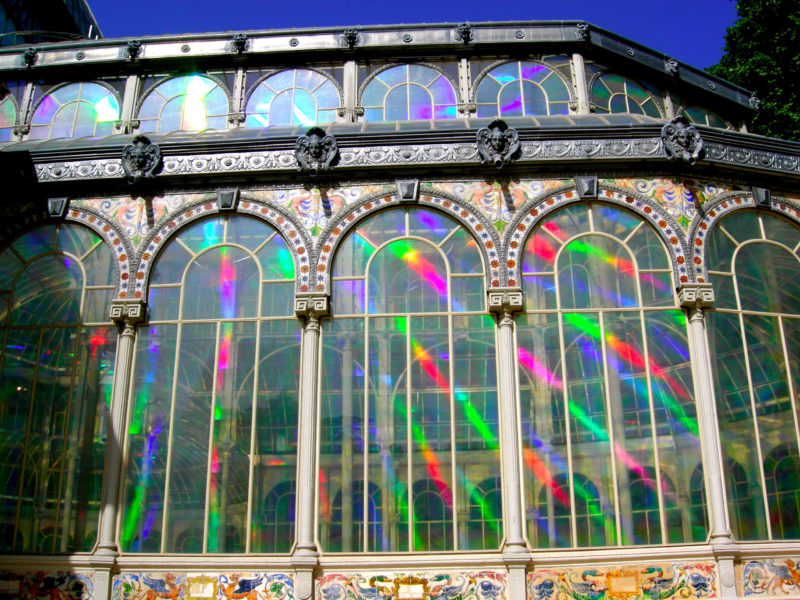
She included an entire glass structure on the palace wall, covering the fault with a translucent diffraction film and mirrors that covered the floor.
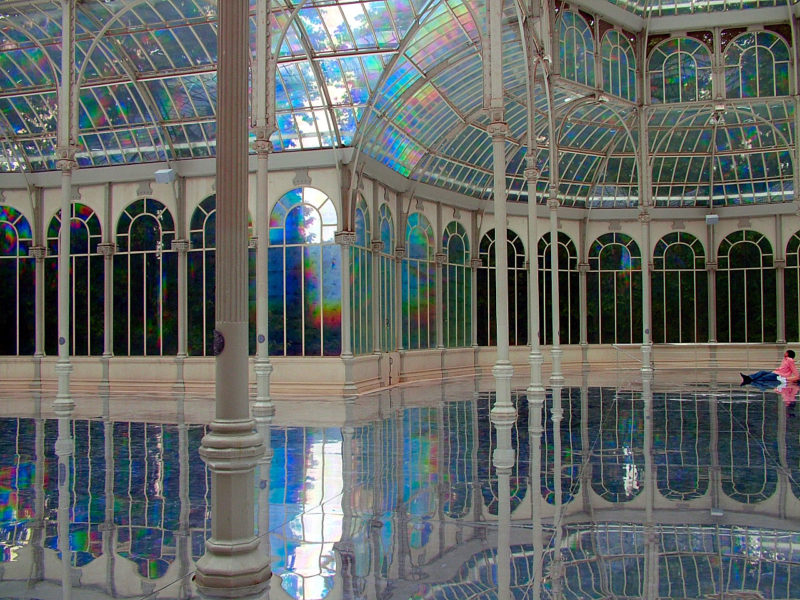
This was combined with the artists’ breath in a soundtrack called The Weaving Factory released in 2004. In her work, she tells the audience to mobilize their sense, experiment with their minds, and put imagination and awareness into action.
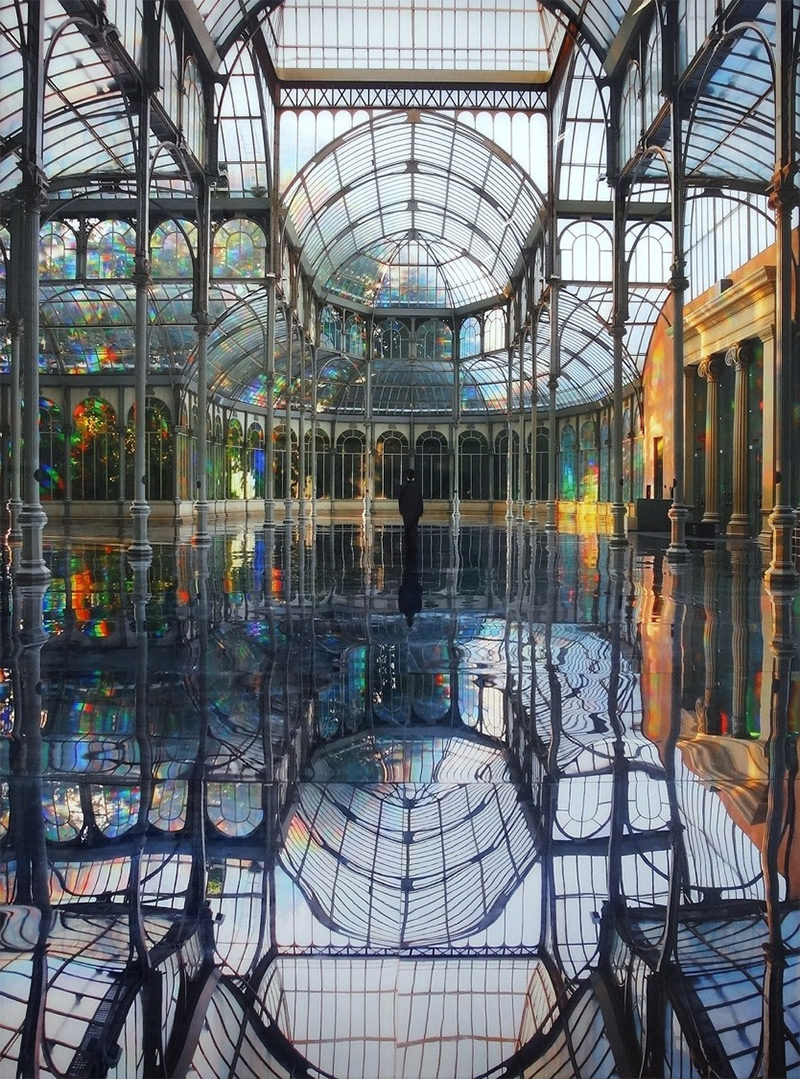
Light from the outside filtered through the pavilion glass and then reflected on the diffraction film. The film caused the rainbow spectrums to bounce on the walls and the mirrored floor. The Weaving Factory, the sound of her inhaling and exhaling filled the entire space, invigorating visitors to the exhibition.
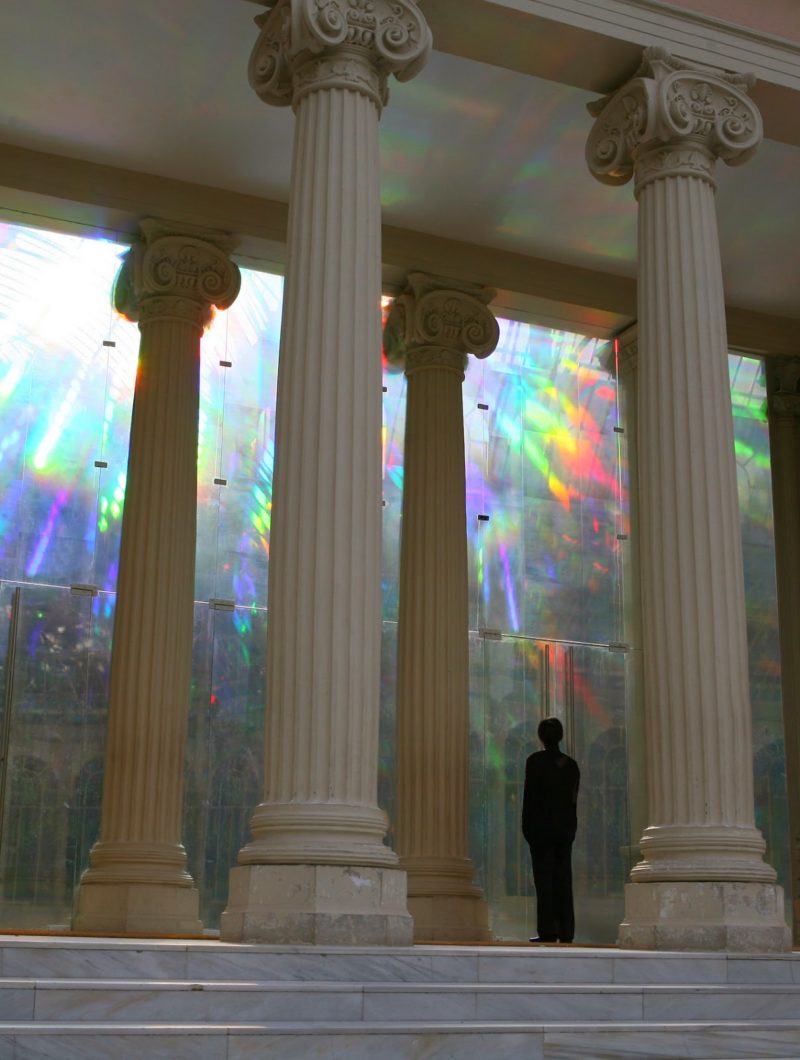
Rainbow installation at the Korean Pavilion, The 55th Venice Biennale, 2013
At the Korean Pavilion at Venice Biennale in 2013 Kimsooja worked as curator. She created space architecture on the work designed by Franco Mancuso and Seok Chul Kim, which became the focus of the exhibition.
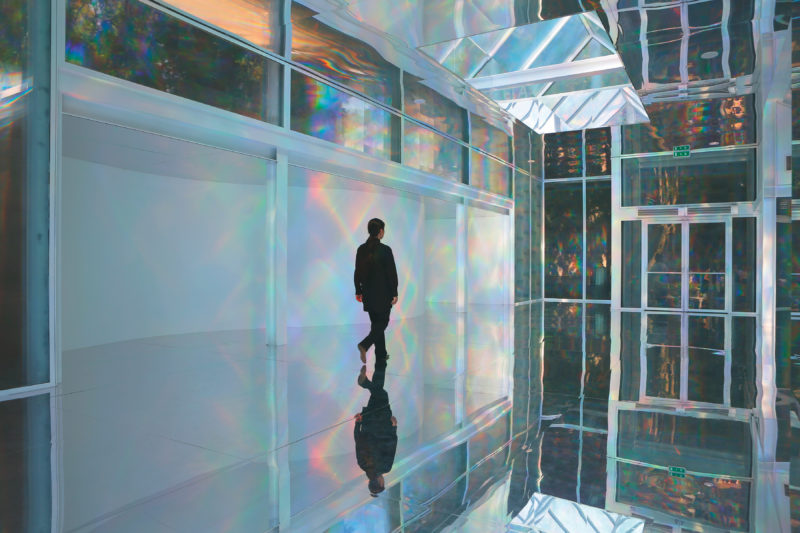
The focus of her work at the pavilion was to create a transcendental experience that brings about the relationship yin and yang to the person’s life, relating to others and oneself and the ‘bundle’ or the Bottari Korean concept of ‘breath.’
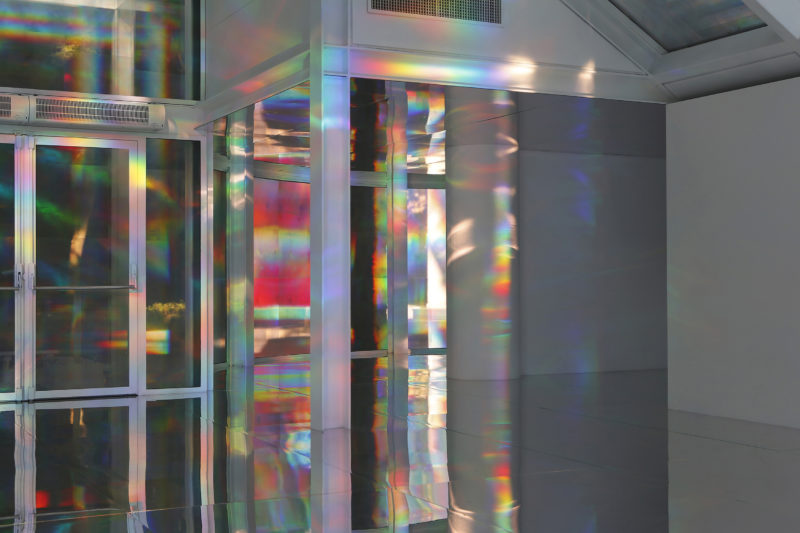
The interior of the pavilion was wrapped entirely with translucent film, which diffracted the light and divided the built environment from nature. The film also showered the entire internal room in the entire light spectrum.
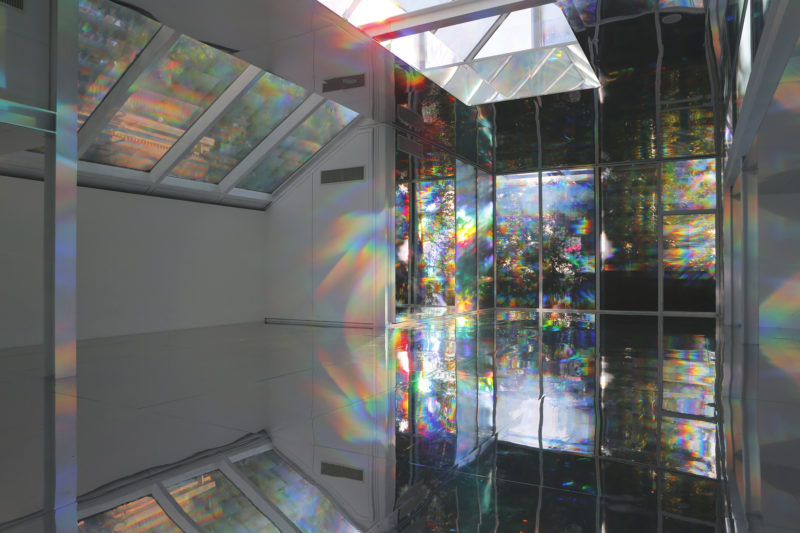
Rainbows were reflected on the walls and the floor and changed locations depending on the position of the sun. Just as she did in Palacio de Cristal Madrid in 2006, she used ‘Weaving Factory’ and showed the sound of her inhaling and exhaling, filling the entire place with life.
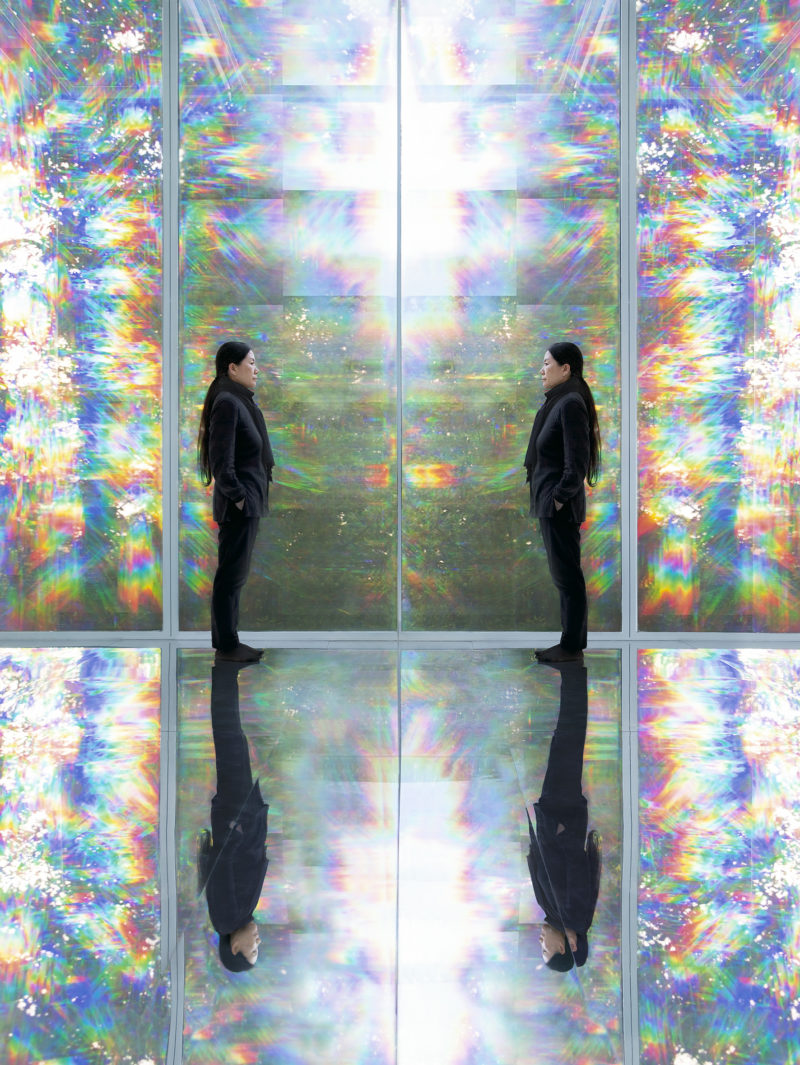
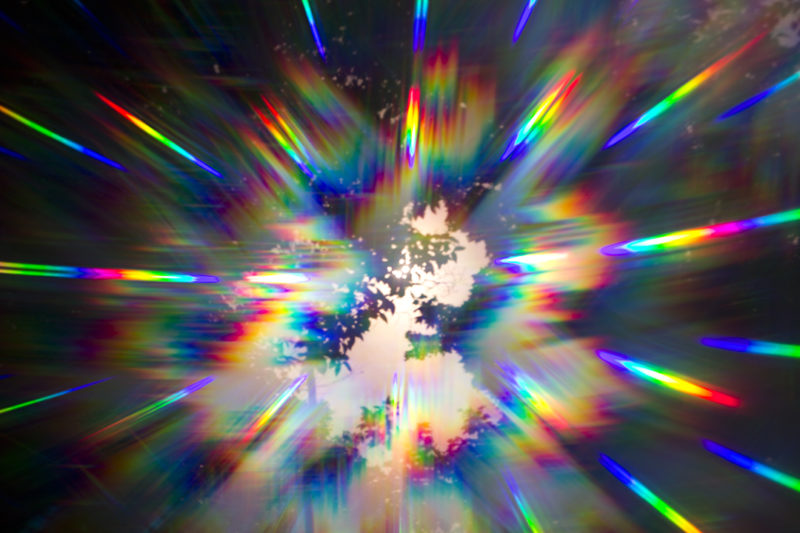
To breathe, Centre Pompidou-Metz, 2015-2016
To mark the French-Korean Year in January 2016, the Centre Pompidou Metz presented one of her generation’s most influential multi-disciplinary conceptual Korean artists. Kimsooja’s installation “To Breathe” was shown from October 2015 to January 2016.
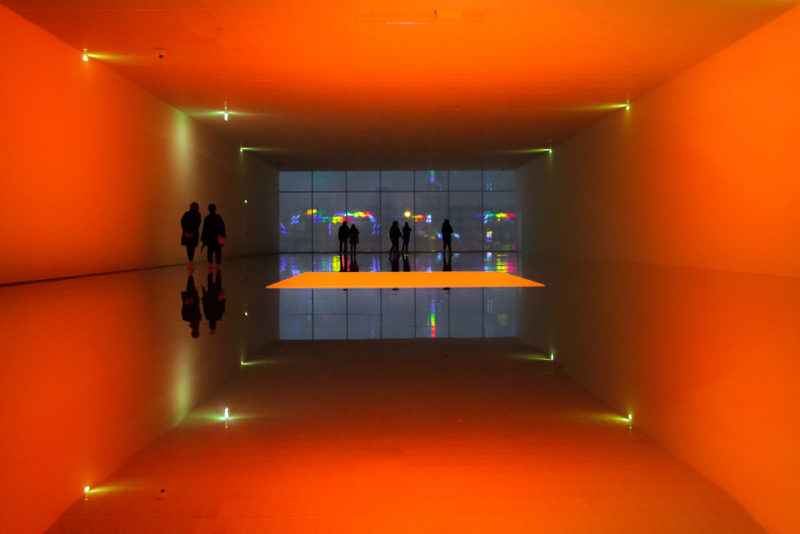
To Breathe at Metz sought to be the sum of the artist’s early meditation on painting, where the surface of the canvas is intuited to become a mirror that wraps identity, space, and time, and where brushstrokes are destined to dematerialize into splitting of light.
For this project, Kimsooja took on the Centre Pompidou Metz’s innovative architecture, designed by Japanese architect Shigeru Ban, to create a tri-dimension display. It transformed the long span of the museum’s space and its bay windows into a liquid-like mirrored surface that the artist called an ever-expanding “fabric that is sewn by our gaze“3.
Seeing mirrors as an opportunity to fold and unfold spaces, the artist first used mirrors for Harald Szeemann’s curated 1999 Venice Biennale, where she reflected a loaded truck onto a wall-sized mirror that offered a virtual exit for the vehicle. This was also a continuation of the artist’s involvement with the Korean tradition of wrapping belongings4 into travel bundles known as Bottari in Korean.
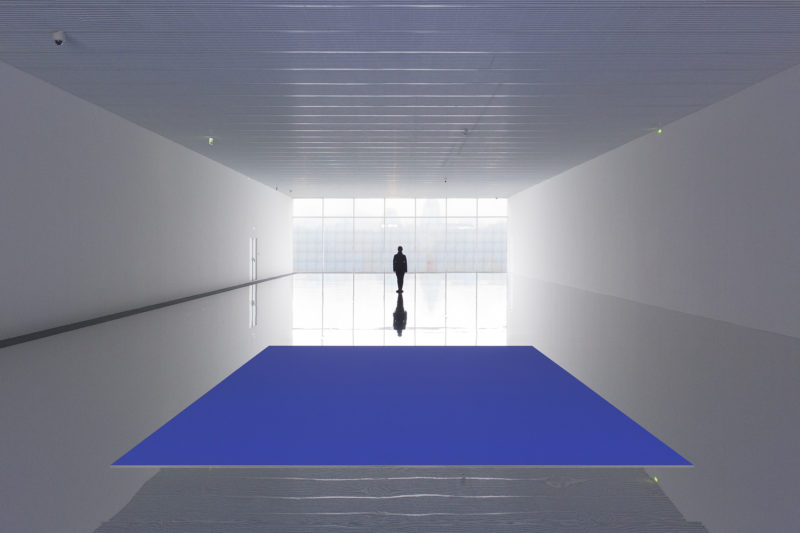
To Breathe was one of Kimsooja’s most complete installations. It spun the museum’s entrance, the 80 meters long Gallery 2, and the breadth of the opposite ends of two bay windows. The space of the museum’s gallery found its utmost expression as a transient path.
From the window’s light was split, reflected on an almost liquid surface and reunited inside the projection of the artist’s video piece To Breathe, a series of digital monochromes accompanied by the sound of a chorus of the artist’s inhalation and exhalation.
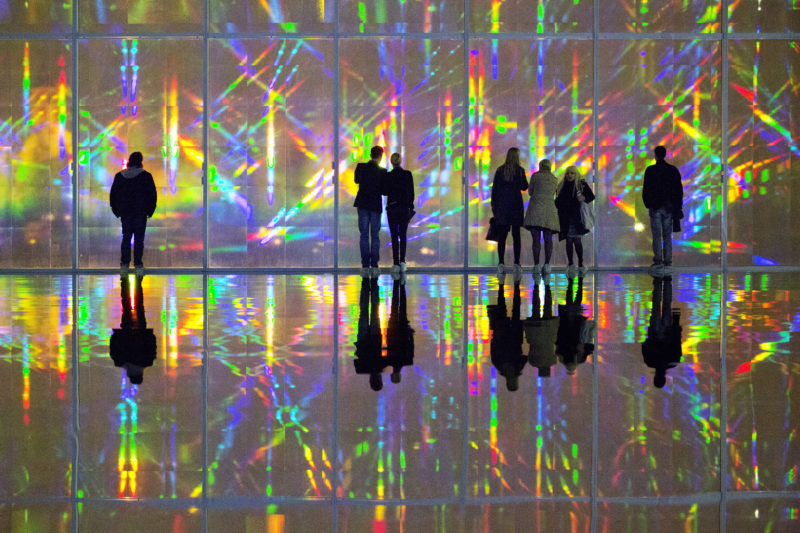
Before entering the gallery, visitors were asked to cover their shoes with recyclable booties because the floor had been coated with mirrors. The artist commented5:
To Breathe invites the audience’s body and participation to an audio-visual weaving experience. Through the process of gazing, the surface of the ever-changing color spectrum as a tableau which wraps the world using immaterial methodology, the mirror, and the breathing sound as another corporal synchronization with the audience’s breath, , there is established a wholeness within the space and the experience. The question I pose to this ever-changing color field is ‘Where is the surface?’
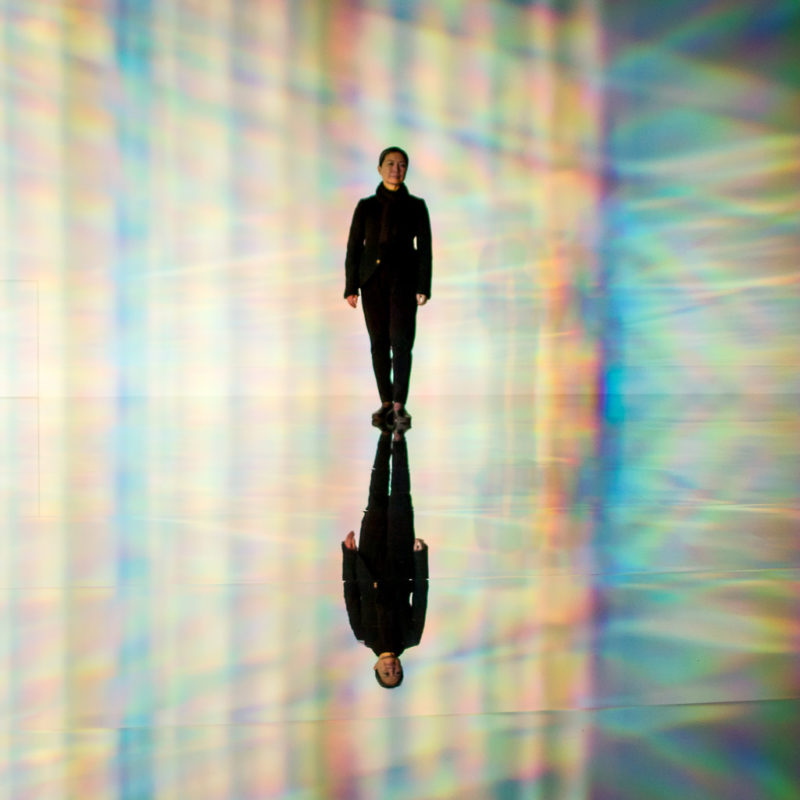
To breathe, Yorkshire Sculpture Park, 2019
As part of Yorkshire Sculpture International 2019, Kimsooja transformed the historic chapel at Yorkshire Sculpture Park with the To Breathe installation.
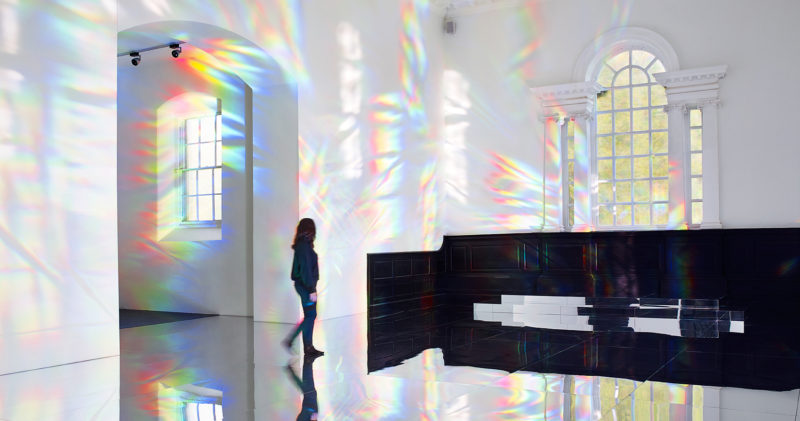
The exhibition was part of the inaugural Yorkshire Sculpture International, produced in collaboration with Henry Moore Institute, the Leeds Art Gallery, and the Hepworth Wakefield.
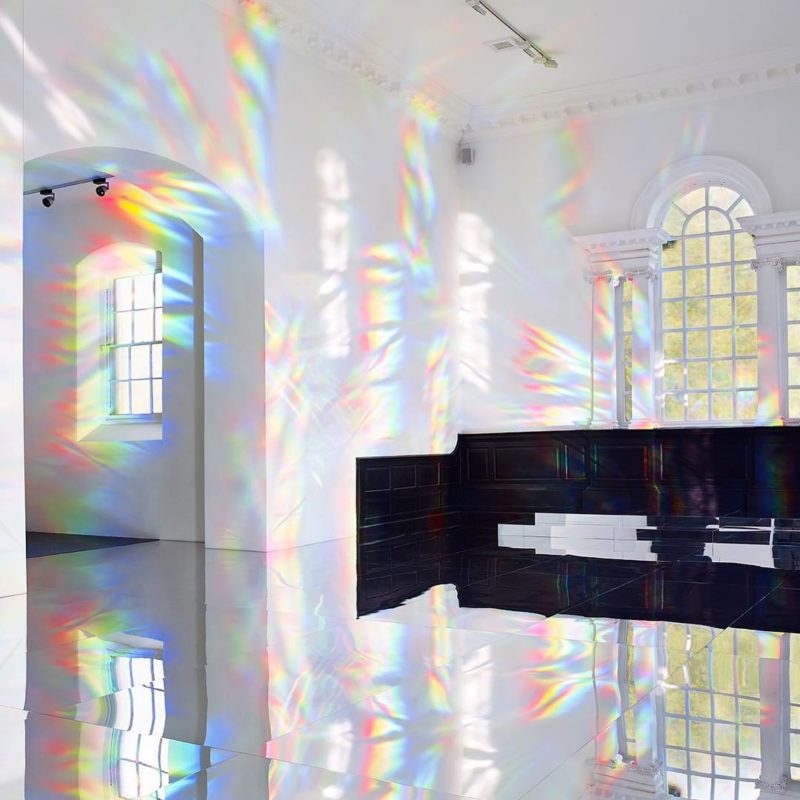
With a lightness of touch, the artist transforms the entire space and blurs expected boundaries.
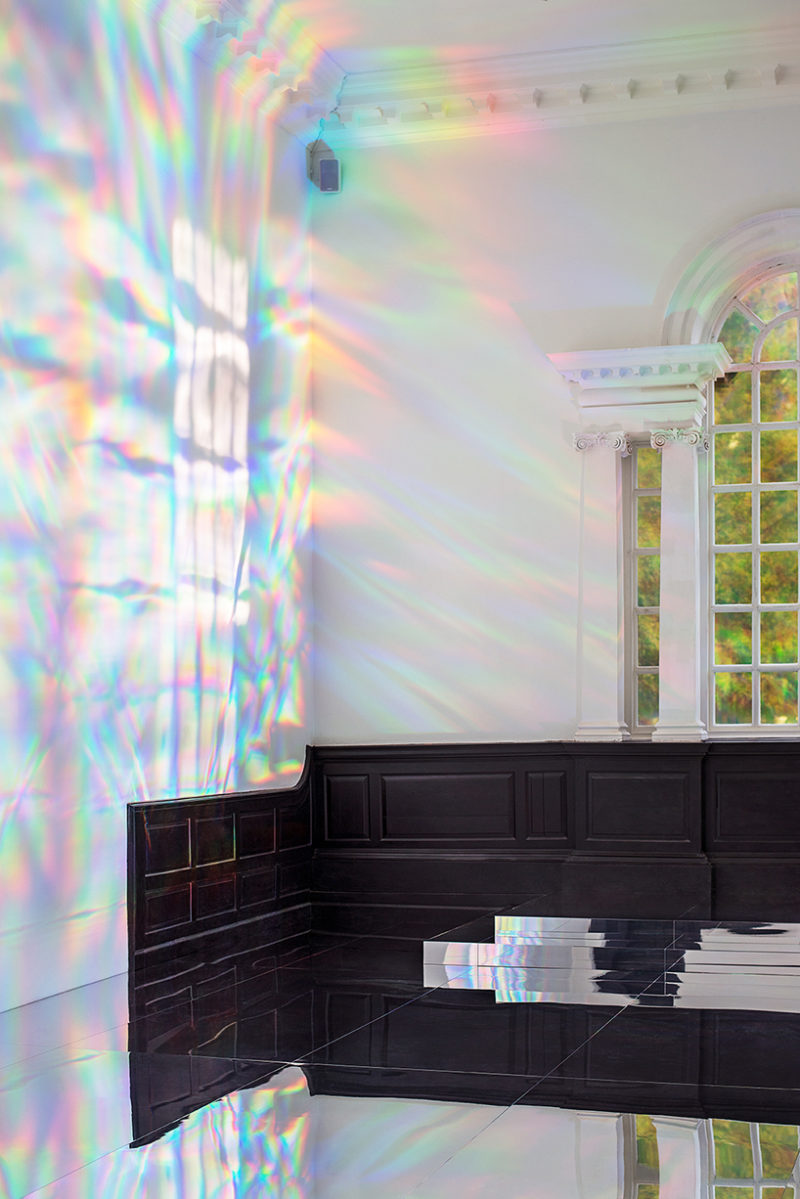
The floor is covered by mirrors to provide a new way of seeing, opening up and unfolding the room, making solid surfaces and confining structures appear fluid and expansive.
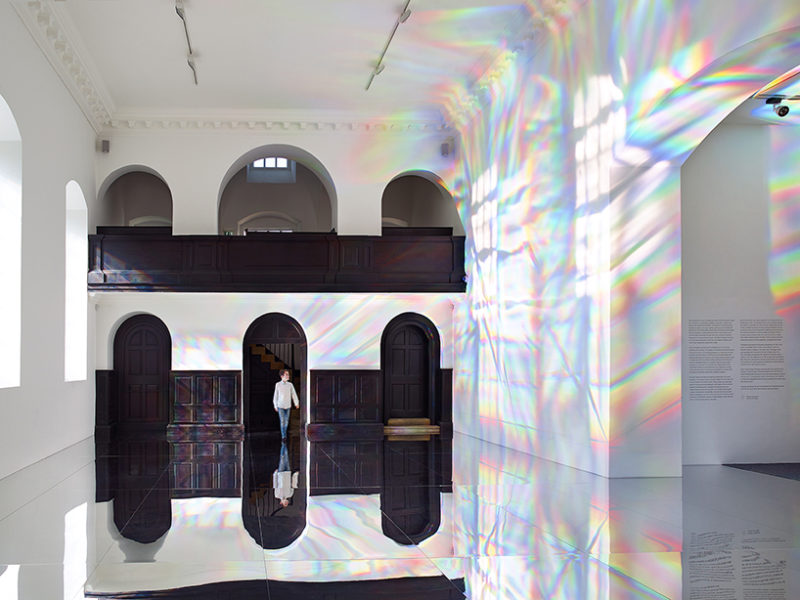
By placing fractions of film on all the windows, the light that enters forms a myriad of rainbow spectrums across the space, which are reflected infinitely through the mirrored floor.
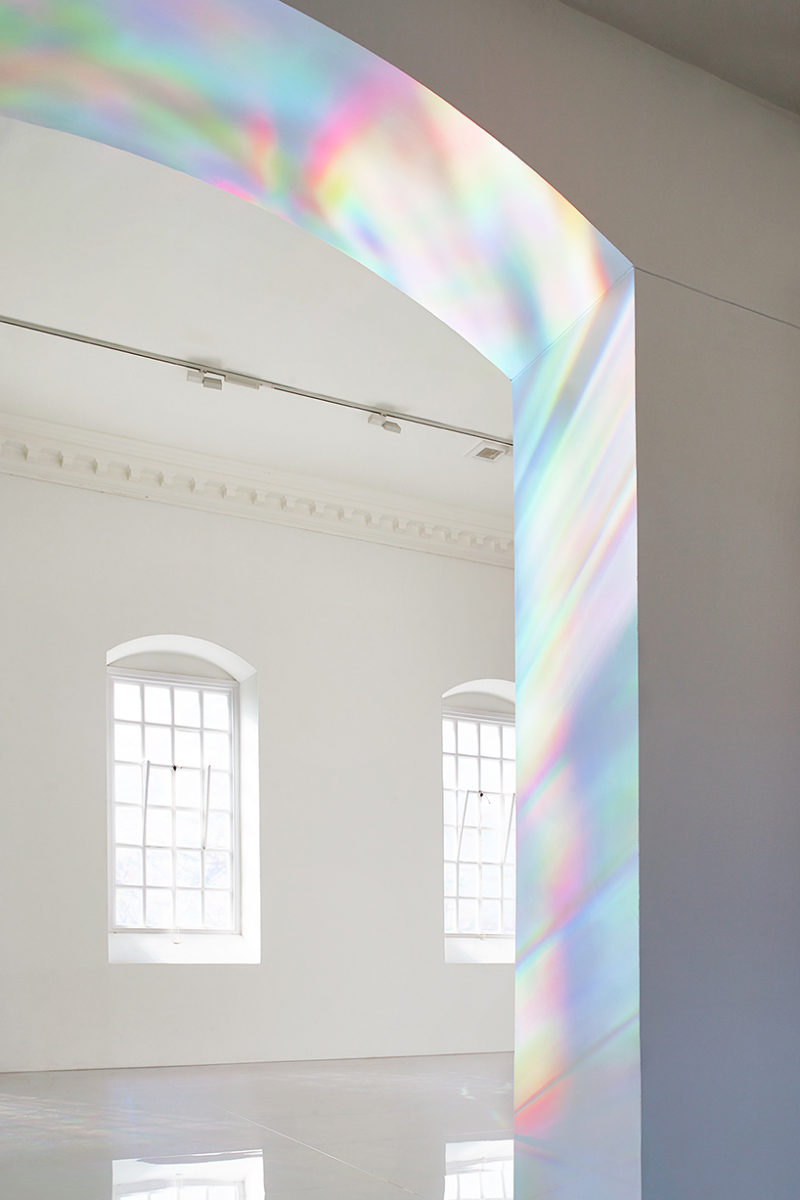
Responsive to the natural environment, To Breathe changes according to the light quality and intensity, making every experience different and unique.
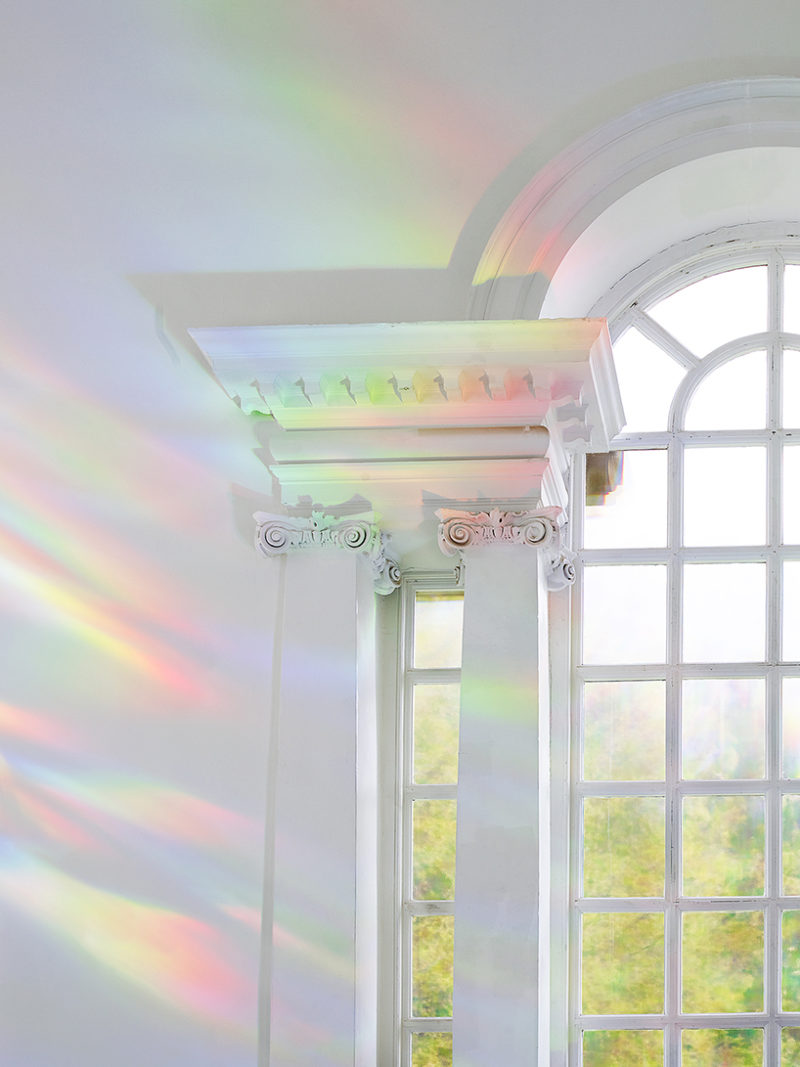
The 18th-century chapel at the Yorkshire Sculpture Park has been blessed with a lineage of creative sanctifications by the likes of Chiharu Shiota, Bill Viola, and Ai Weiwei, whose Iron Tree installation still sprouts its rust-ridden limbs outside the entrance.
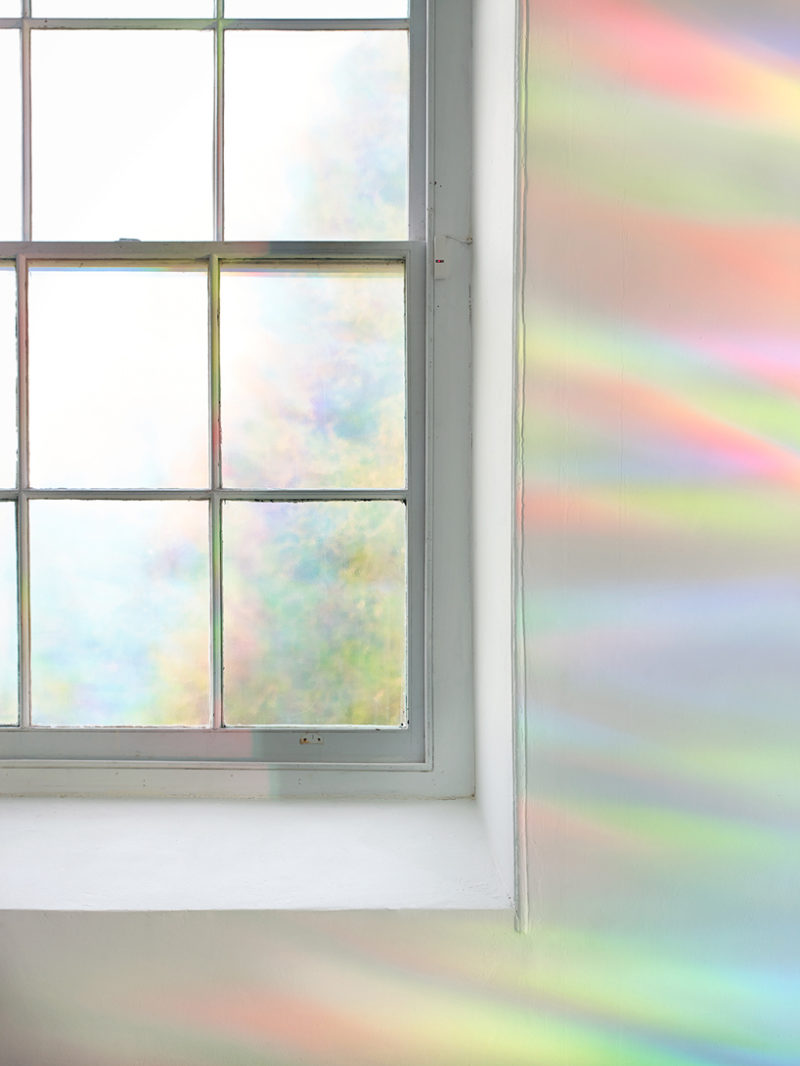
The chapel’s architecture has been exploited as much as respected. Its original framework is intact, but it has been stripped of Christianity and transformed into a vessel of anonymous faith.
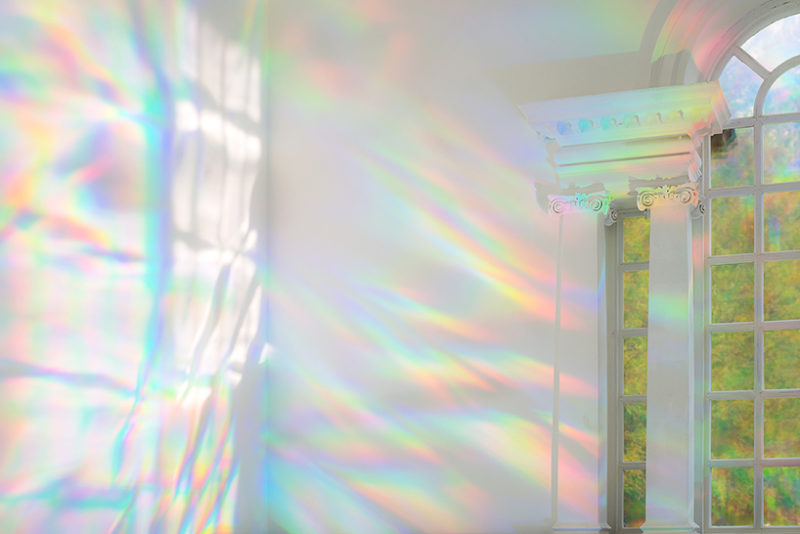
The walls are awash in white, the alter has been reduced to just a step, and instead of an organ for the loft, Kimsooja composed her own recorded soundscape to’ activate the aural space‘6.
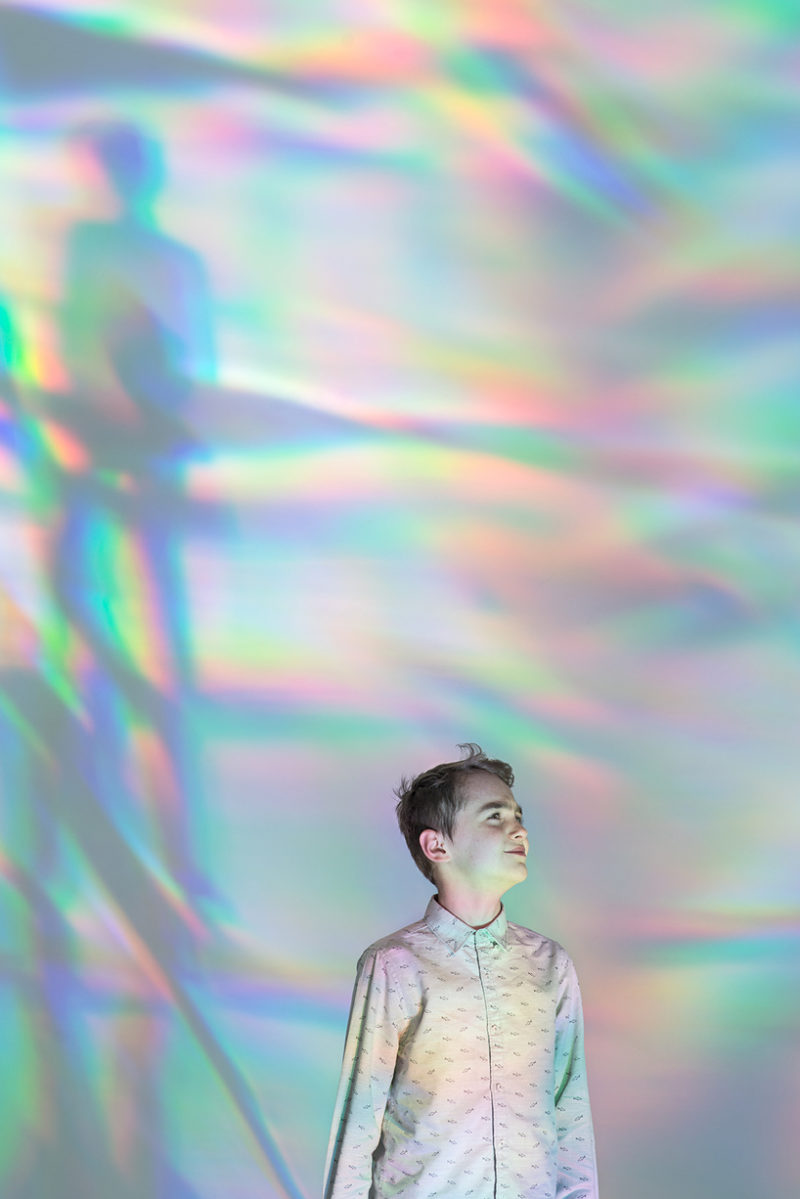
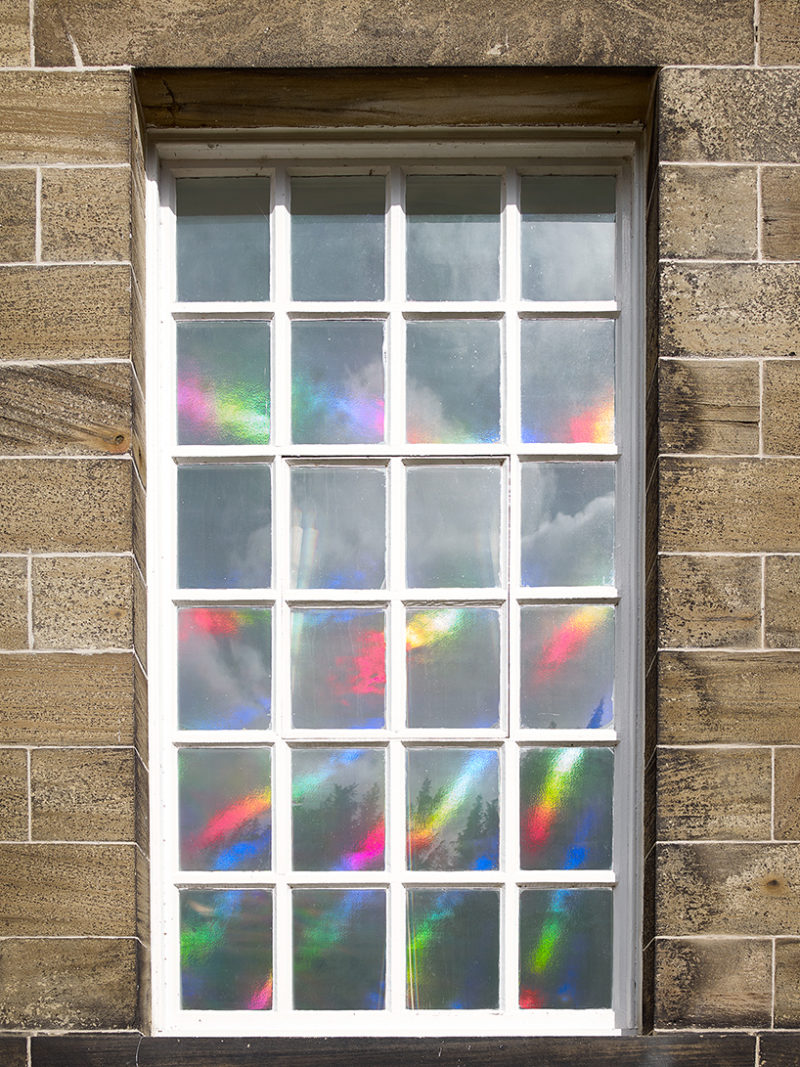
To breathe, Villa Empain, Brussels, 2020
From 2020 to 2021, the exhibition The Light House at the Boghossian Foundation at Villa Empain, Brussels, explored manifestations of light in art and the sensations it causes. The public was invited to experience a succession of personal and collective experiences with light, most of them immersive, through the works of 21 prominent contemporary artists such as Joseph Kosuth, James Turrell and Franz West, spanning nearly 60 years of artistic production.
The Light House offered a circuit that revolves around five themes: celestial light, murky light, the experience of color, in praise of shadow, neon lights and light bulbs, with some pieces and installations being produced specially designed for this exhibition.
To defend the idea that culture is the image of light, the very essence of which is to lead us out of darkness, The Light House also expanded beyond the museum’s walls, with the exhibition fanning out to other leading cultural sites and public spaces.
